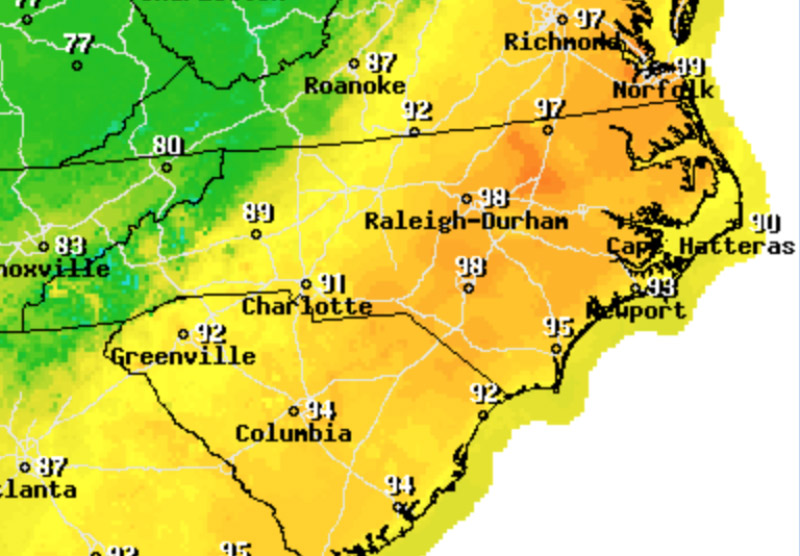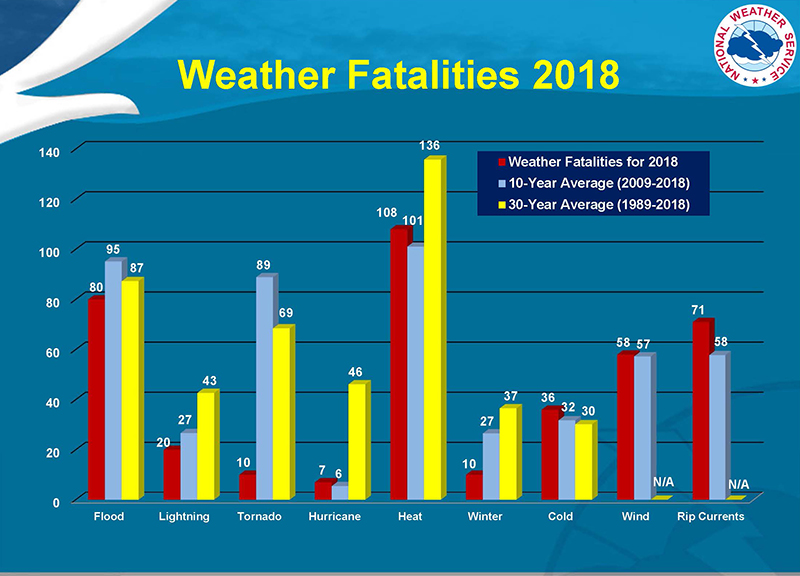Intense Summer Heat in Cary: What to Know
Cary, NC – Temperatures are near record highs this Summer, and currently, central North Carolina is under a heat advisory after already going through an excessive heat warning over the weekend. Here’s what you need to know about local temperatures and how to stay safe.

Excessive Heat
The National Weather Service is calling for a weather advisory this Monday, July 22, 2019, with advisories likely through the rest of the week.
That comes as Cary hits highs of 96 degrees Fahrenheit, with “heat index values between 100 and 103 degrees,” according to the National Weather Service. Over the weekend, temperatures in Wake County hit 99 degrees Fahrenheit, the hottest recorded this year.
Despite hot, moist weather in Cary leading to more thunderstorms, we have not seen the kind of relief a thunderstorm usually brings as the tall cumulonimbus draws on cooler air higher up in the atmosphere. This is a because we’ve seen relatively little rain from these storms lately, though the storms that have hit have brought strong, cold winds.
Right now, forecasts are showing rain for most of Tuesday, July 23, 2019, along with temperature predictions that bring the heat down to the 80-degree mark for much of the week. But after that, current forecasts predict we’ll be back in the low to mid 90s for the foreseeable future, and August is typically even hotter than July in North Carolina.
The Raleigh-Durham International Airport temperature records show records in the low 100s for the rest of this week throughout history, so we are likely not going to reach those levels in the coming weeks. However, this is the second excessive heat warning for the region since 2017.

Staying Safe from the Heat
Not only is intense heat uncomfortable, it’s also dangerous. Heat-related deaths outpace all other weather-related deaths by a wide margin, with 108 heat-related deaths across the United States last year.
The best way to avoid head-related illness is by staying cool, whether that’s with air conditioning, a fan, lighter clothing, etc. However, air conditioning units use a lot of electricity, so try to find a balance between comfort and intensity. 78 degrees Fahrenheit is a good target temperature that will keep you from illness while also saving energy. Also, when not using your home, especially for a long stretch of time, consider getting the temperature all the way to 85 degrees Fahrenheit. You can also calculate how much electricity your air conditioner is using, and how much it is costing you, with an online tool.
Another way to avoid heat-related illness is to remain hydrated. If you know you are going to have to exert yourself or be outside in the sun for a long time, drink a lot of water beforehand. Just drinking water while you are out and sweating is not enough to rehydrate. Also, you need electrolytes so eat food along with your water consumption, or even drinks loaded with electrolytes.
Warning signs include nausea, dizziness, cramps or weakness so if you experience these while in the heat, get shade and get out of the heat.
Story by staff reports. Photos by the National Weather Service and Hal Goodtree.




But climate change is a hoax. Yeah, right.